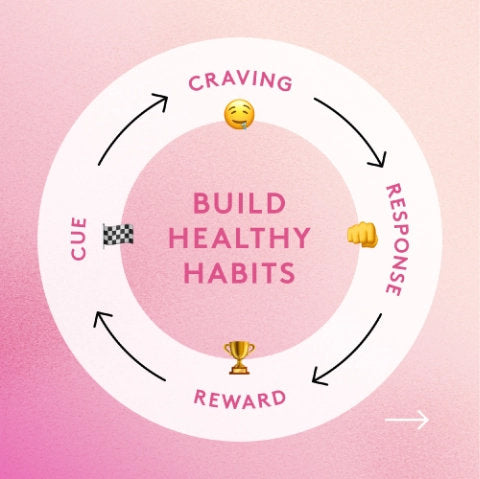Whether you’re an athlete, competitive lifter, or just someone who regularly hits the gym, optimizing your performance is usually somewhere on the list of goals.
You want to feel and perform at your best, and to do that, you sometimes have to tweak your nutritional strategies.Altering your macronutrient ratios to increase protein or decrease carbs is one way to go about it, but carb loading is another. It’s a tell-tale practice used by athletes all over the world to improve performance.The idea behind carb loading is to adjust your physical activity and food intake to maximize glycogen stores. But while the principle of carb loading seems pretty simple, it’s quite easy to fall victim to common mistakes. Right now, we’re covering everything you need to know about carb loading and how you can do it safely without making mistakes and impacting your performance.
What Is Carb Loading?
If you’re familiar with anything in the sports nutrition world, chances are you’ve heard about carb loading.
It’s a long-standing philosophy based on the idea of loading up the body’s glycogen stores to maximize energy availability during high-intensity endurance activities. Consuming large amounts of carbs in the days leading up to a big endurance workout can boost energy reserves and therefore enhance performance.Glycogen, the storage form of glucose, is your body’s primary (and preferred) source of energy. The liver and muscles both store relatively large amounts of glycogen from which the body pulls when blood glucose is depleted. Carb loading, however, is a nutritional strategy employed to increase carbohydrate (glycogen) stores above normal levels 1.
It generally involves a combination of reducing exercise to limit glycogen depletion while increasing the number of carbs consumed to boost stores. In doing so, an athlete can sustain a higher level of work for a longer period.Although it can be tempting to chow down on a massive bowl of pasta for every meal, the most ideal strategy to carb load follows a gradual approach. Gradually increase total carb intake before an endurance event to tap into an increased liver and muscle glycogen content during long exercise.
Depending on the extent of carb loading, carb intake can range anywhere from 2.3–5.5g/lb (5–12g/kg) of body weight per day. So, for someone that’s 154lbs (70kg), you’d be looking at about 350–840g of carbs per day 1. See why it’s called carb loading? But it’s not for all and any type of exercise. Carb loading is most beneficial for endurance events - activities that cause major depletion of muscle glycogen stores 2.
During long-duration strenuous workouts, fatigue can set in quickly once glycogen stores become too low. And research shows that carb loading for endurance activities exceeding 90 minutes can improve performance by as much as 2-3% 3.The idea is that by boosting reserves, you can avoid bonking or the dreaded “hitting a wall” mid-performance.
4 Types Of Carb Loading
When it comes to carb loading, there’s not just one way to do it.
Although each strategy differs slightly in its approach, they’re all designed to increase the number of carbs consumed before an event and temporarily decrease the amount of exercise to limit glycogen depletion.Here are some of the most popular methods:
6-day cycle
For days 1 to 3 of this cycle, you’ll want to drop carbs to follow a low-carb protocol with about 15% of calories coming from carbohydrates 4.
Keep your normal exercise routine during this period. Combining a low-carb diet with exercise helps to deplete your body’s glycogen reserves.On days 4 to 6, boost your carb intake to about 70% of total calories and scale back your exercise. On day 4, you should be doing only light exercise and on days 5 and 6, do not exercise.Alternatively, you can take a slightly different approach to the 6-day cycle. Instead of following low-carb for the first three days, consume moderate-carb with roughly 50% of your calories coming from carbohydrates 5. Then continue with 70% for the following three days.
Throughout the 6 days, you’ll want to gradually decrease the amount of exercise you do, so on the last day, you’re getting a maximum of 20 minutes of activity.
3-day cycle
This is a faster carb load than the 6-day cycle but equally effective.
On day one, you’ll exercise until you reach exhaustion; the goal here is to deplete your glycogen reserves as much as possible. For the following two days, you’ll forego exercise while following a high-carb diet (70% carbs).
Modified 3-day cycle
As the name suggests, this is a modified version of the 3-day cycle that follows the exact same protocol but excludes exercise. You do not exercise for the entire cycle but continue to increase carbs up to 70% of your total daily calories 6.One study using this approach used 4.5g/lb (10g/kg) of body weight per day, which equates to roughly 700g of carbs for a 70kg (154lb) person.
However, this study failed to show significant differences in performance between the group carb-loading and the placebo.
One day protocol
If you’re looking for a simple carb load, this is it. It’s a one-day protocol where you increase your carbs and avoid exercise.
Ideally, aim for about 4.5g/lb (10g/kg) of body weight 7. As with the previous example, for a 70kg person, you’d be consuming around 700g of carbs per day.
Most Common Carb-Loading Mistakes
You’re carb loading at the wrong times
Many people are under the impression that carb loading can improve performance period—but it’s not true.
If you’re exercising for less than 90 minutes, research shows carb loading isn’t really needed or effective 3, 5. And if you’re doing resistance training or other short-duration high-intensity work (HIIT), it’s probably unnecessary 8.A couple of studies have looked at the effects of carb loading on short-duration high-intensity cycling and found no improvement 9, 10. So, if you’re a trained individual who’s carbing up in hopes of hitting a new PR on your lifts, you’re not going to see much benefit.
Your macros are off
If you’re eating too much fat or protein and not enough carbs, your carb load isn’t going to be effective.
When trying to maximize glycogen reserves, you need to be eating enough carbs. The idea behind carb loading isn’t to gain weight so if you’re boosting your carb intake and not cutting back on your fat, you’re going to see the pounds pile on, which could adversely affect your performance. While fat is still important in the diet to maintain hormone balance, when you’re carb loading, you want to choose foods that are high in carbs but not too high in fat or calories.
You’re eating too much fiber
The purpose of fiber is to slow down the absorption of food and support gut and bowel health.
However, eating too much fiber will not only slow down the absorption of glucose into your bloodstream, but it can also cause major GI discomfort in some people. Instead, choose low-fiber foods like white potatoes or rice and save the high fiber foods for after your load.
Eating the wrong amount of carbs
Carb loading is all about precision and you can easily be eating too many or too few carbs to support a proper carb load.
The ideal amount is between 2.3–5.5g/lb (5–12g/kg) of body weight per day, which, if you’ve never tracked your food intake can be difficult to know if you’re reaching. If you’re not consuming enough carbs, you’re not doing a carb load and you’re not going to see the results attached to it. If you aren’t sure you’re eating enough, try measuring and tracking to make sure you’re hitting your targets.
You’re over-exercising
The idea behind carb loading is to maximize your body’s glycogen stores.
If you’re exercising too much, especially fasted, you’re going to be burning through those glycogen stores and constantly depleting what you’re trying to fill. Taper the amount of exercise you do during your carb load.
How To Carb Load The Right Way
Make sure you need to carb load
If you’re not participating in long-duration endurance activity beyond 90 minutes, chances are you don’t need to be carb loading. If you’re running or cycling for hours on end, carb loading may be beneficial for your performance.
Determine your normal carb intake
Tracking your food intake for a week can be helpful to determine what your current carb intake is.
Once you’ve figured that out, divide your carb intake by your weight so you can compare your current intake with your chosen carb loading intake.Typical recommendations for carb loading are between 2.3-5.5g/lb (5-12g/kg) of body weight, however, you may want to narrow that down to a smaller window ranging from 3.6–4.5g/lb or 8–10g/kg. Ideally, consume somewhere in the middle.
Increase carbs, not fat
As we mentioned with carb loading mistakes, if you’re not looking to add weight, you need to make sure that you’re increasing one macronutrient at the expense of another.
In this case, we’re increasing carbs and decreasing fat. Avoid choosing foods that are both high in fat and carbs. Stick to simple, whole foods that offer a good amount of carbs per serving.You also want to ensure you’re choosing the right kinds of carbs. While it may be tempting to reach for pastries, bread, and sweets, you want the carbs you’re consuming to contribute to your performance, not major blood sugar imbalances and GI issues.
Choose whole food sources like rice, potatoes, and root vegetables.
Determine your carb load duration
The duration of your carb load will likely be dictated by the event you’re participating in and how soon it is. If you’re following a 3-day protocol, you want to start your carb load 72 to 96 hours before your event. You can also test out carb loading strategies during training to find which one works best for you and gives you the most optimal performance. Generally, you want to experiment during your training as opposed to right before your competition to avoid interfering with your performance.
Stay hydrated
Regardless of which type of carb load you do, you want to stay hydrated. Proper hydration is needed for both performance and recovery, and not taking in enough fluids throughout your carb load could spell trouble.Aim for around 1ml of water (or other fluid) per calorie consumed. That means if you’re consuming 2,500 calories per day, you should be drinking 2.5L of water daily, at minimum.
You can also check the color of your urine—properly hydrated urine should look like light lemonade.
Final Thoughts
Carb loading is a nutrition strategy that’s been used for ages to enhance athletic performance.
Typically, a carb load is done anywhere from one to six days before an event and involves two components: reducing exercise and increasing carb intake. While it’s recommended to increase your carb intake to 2.3–5.5g/lb or 5–12g/kg, narrowing that down could be more effective. That said, carb loading isn’t for everyone. Evidence suggests that athletes who aren’t engaging in high-intensity endurance activities over 90 minutes may not benefit from a carb load.
So, tailor your nutritional strategy to your event and your body’s needs. If you’re someone who’s looking to boost performance for prolonged endurance activity, try experimenting with a carb load before competition time to see what method works best.
References
- Jeukendrup AE. Nutrition for endurance sports: marathon, triathlon, and road cycling. J Sports Sci. 2011;29 Suppl 1:S91-S99.
- Sullo A, Monda M, Brizzi G, et al. The effect of a carbohydrate loading on running performance during a 25-km treadmill time trial by level of aerobic capacity in athletes. Eur Rev Med Pharmacol Sci. 1998;2(5-6):195-202.
- Hawley JA, Schabort EJ, Noakes TD, Dennis SC. Carbohydrate-loading and exercise performance. An update. Sports Med. 1997;24(2):73-81.
- Bergström J, Hermansen L, Hultman E, Saltin B. Diet, muscle glycogen and physical performance. Acta Physiol Scand. 1967;71(2):140-150.
- Sherman WM, Costill DL, Fink WJ, Miller JM. Effect of exercise-diet manipulation on muscle glycogen and its subsequent utilization during performance. Int J Sports Med. 1981;2(2):114-118.
- Burke LM, Hawley JA, Schabort EJ, St Clair Gibson A, Mujika I, Noakes TD. Carbohydrate loading failed to improve 100-km cycling performance in a placebo-controlled trial. J Appl Physiol (1985). 2000;88(4):1284-1290.
- Bussau VA, Fairchild TJ, Rao A, Steele P, Fournier PA. Carbohydrate loading in human muscle: an improved 1 day protocol. Eur J Appl Physiol. 2002;87(3):290-295.
- Escobar KA, VanDusseldorp TA, Kerksick CM. Carbohydrate intake and resistance-based exercise: are current recommendations reflective of actual need?. Br J Nutr. 2016;116(12):2053-2065.
- Vandenberghe K, Hespel P, Vanden Eynde B, Lysens R, Richter EA. No effect of glycogen level on glycogen metabolism during high intensity exercise. Med Sci Sports Exerc. 1995;27(9):1278-1283.
- Greenhaff PL, Gleeson M, Maughan RJ. The effects of dietary manipulation on blood acid-base status and the performance of high intensity exercise. Eur J Appl Physiol Occup Physiol. 1987;56(3):331-337.












